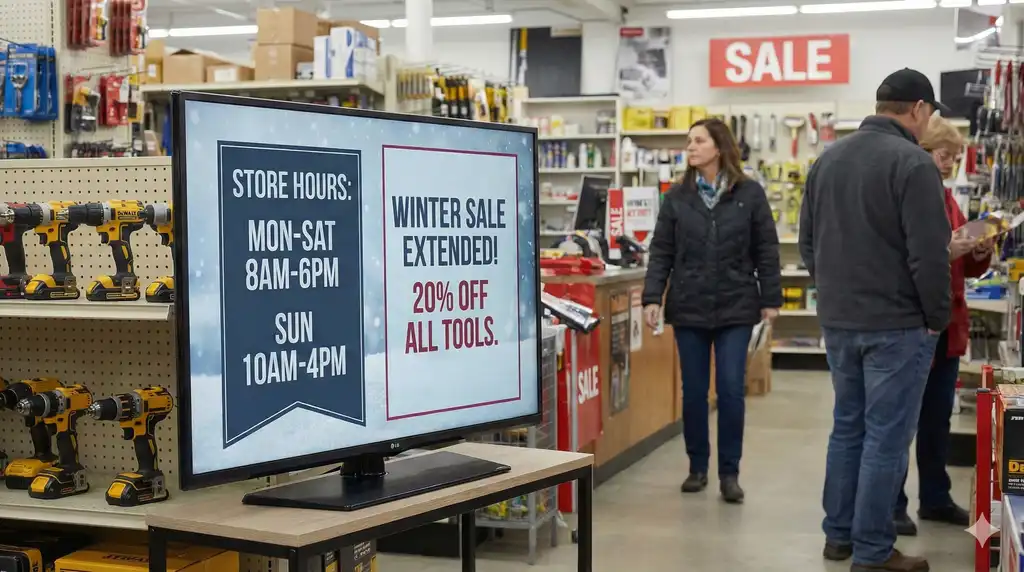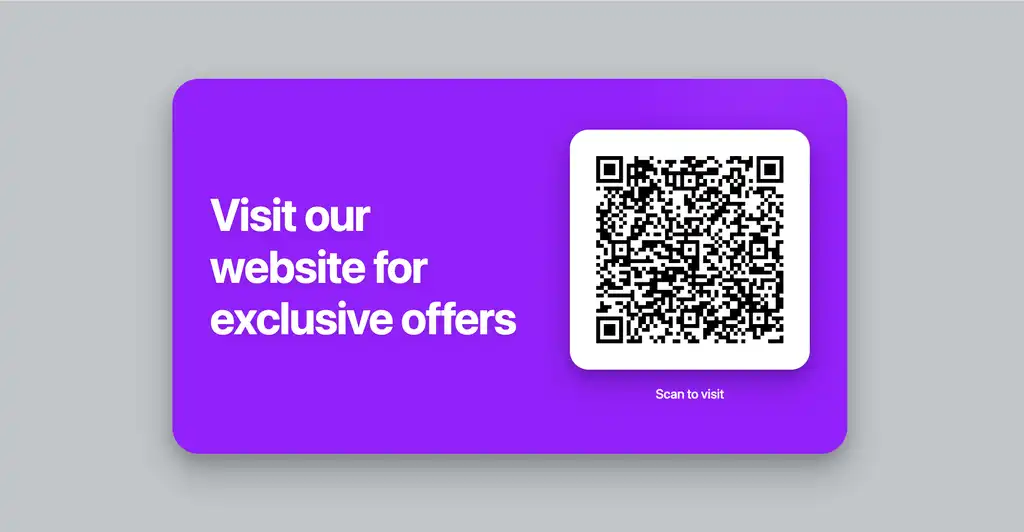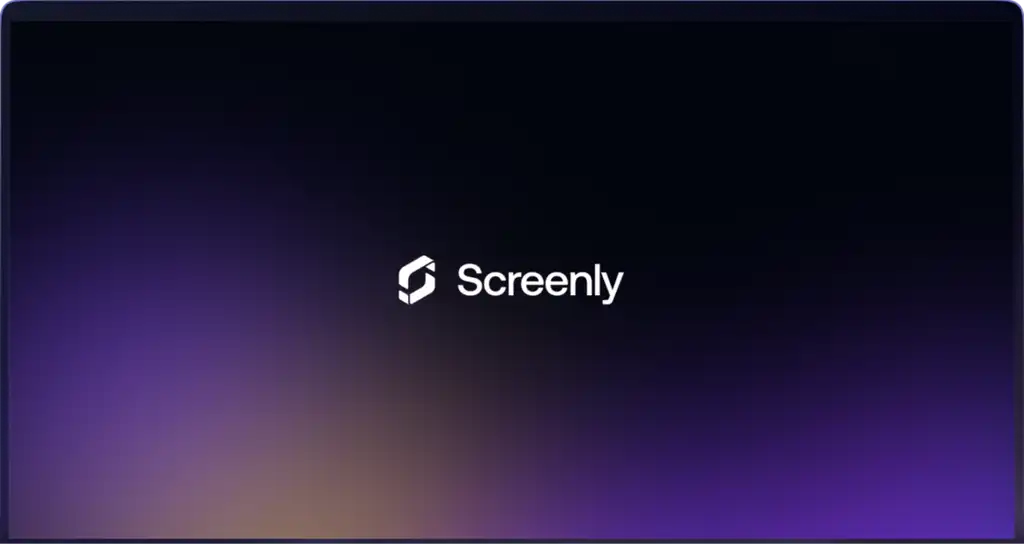Digital signs have the power to enhance your business’s communications with your customers and employees. While digital signage software and digital signage hardware are important choices, a digital signage deployment can only be successful with engaging content. In the post below, we cover key points on digital signage content design. These tips will ensure that your signs are legible, attention-grabbing, and impactful.
Make sure that people can read your content
Packing your digital signage content with text, infographics, and special offers is a big mistake. It is important to keep your content design simple and prioritize legibility. To do so, use the 5x5 rule, which states that you should have no more than five lines of text with five words each on any content slide.
Also, try adhering to an F pattern for your content layout. Imagine a large “F” filling your screen. Align important content layers along the X-axis lines of that imaginary letter. Additionally, be sure to arrange content left to right so that people can read it with a natural left-right gaze.
When it comes to fonts, use legible fonts. The most legible fonts, like Arial, are in the Sans Serif family. You can further enhance legibility by using contrasting colors. This practice makes it easier for people viewing your digital signs to read what you have to say from a distance or in low light or extreme brightness.
Remember ratios in digital signage content design
Consider the ratios of your digital signage content. What often happens is that teams try to repurpose content from other mediums for their digital signs quickly. This process often results in content that is not optimized for the screen dimensions of the digital sign. It then becomes stretched and low resolution when teams upload the content to their screens.
Most digital signage screens and digital signage players optimize for content with an aspect ratio of 16:9. Flipping that, you get 9:16, which is the aspect ratio for content that displays on a vertical screen. When designing content, design specifically for the aspect ratio of your digital sign. Also, consider the pixels that your screen supports. Most digital signs support 1920 x 1080 pixels on 16:9 aspect ratio screens. Be sure to design 1920 x 1080 pixel content to ensure that your digital signage content looks sharp. Content from word documents or PDF’s does not necessarily adhere to 1920 x 1080 pixel dimensions. Digital signage applications may then stretch this content to fit the screen and display content that looks blurry.
Consider context for digital signage content
It sounds like simple advice, but people often forget to follow it. Be sure to consider the context of your digital sign when designing digital signage content. Will your digital sign be in front of customers, employees, or specific teams within your company? Will your digital sign serve multiple audiences? Be sure to consider where your sign will be and who will be looking at it. You can then design your digital signage content with that target audience in mind.
Think about the distance between your digital sign and viewers
Before designing digital signage content, consider the placement of your digital sign in relation to the people who view it. Designing content for a digital sign that is meant for viewing up close is much different than designing content for a screen that is 25 feet away from viewers. On this point, teams should also consider their screen’s pixel pitch. A screen’s pixel pitch is the measurement from the center of one pixel to the center of a neighboring pixel. The smaller the pixel pitch, the more detail the screen has when people view it up close. However, small pixel pitches also make the screen more expensive.
To get the optimal viewing distance between your screen and viewers, calculate the visual acuity distance for your screen. This measurement states the distance a person with 20/20 vision must stand away from your screen in order not to see a pixelated image. To get the visual acuity distance, multiply the pixel pitch in millimeters by 3,438. This calculation will produce the visual acuity distance for your screen in millimeters. Place screens somewhere in between the visual acuity distance and half of that distance to provide an ideal viewing experience.
Getting started with digital signage
Screenly makes it easy to get started with digital signage. To launch your first digital sign, sign up for an online Screenly account with a 14-day free trial. Next, purchase a Screenly Player. A Screenly Player is a palm-sized, physical device that renders content to your screen. You will need one Screenly Player per screen. Lastly, to design digital signage content, check out how to use Screenly with Canva.
If you have any questions on how to get started with Screenly, reach out to Screenly Support for help!





